"We pray for rain"
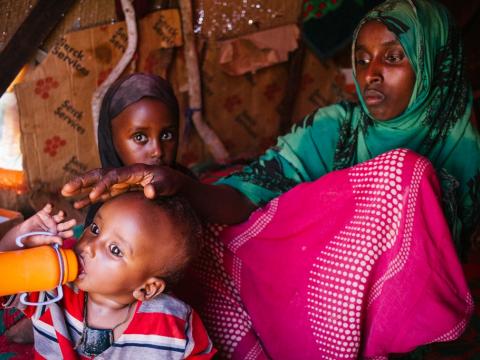
by Maxwell Moser, World Vision's HungerFree
For he makes his sun rise on the evil and on the good, and sends rain on the just and on the unjust. -Matthew 5:45
If I were to step out of the vehicle, it would immediately feel as if I’d walked into a heavy rain. My hair and forehead damp, my breath coming in gasps like breathing through a damp rag. If only it were raining: I’ve never seen a place so dry. We’ve been tumbling through a sea of dust and jagged rock, which Mohammud refers to, jokingly, as a road. We slow to a halt as the land cruiser in front of us hits a pile of dust, and it engulfs our vehicle like a thick fog.
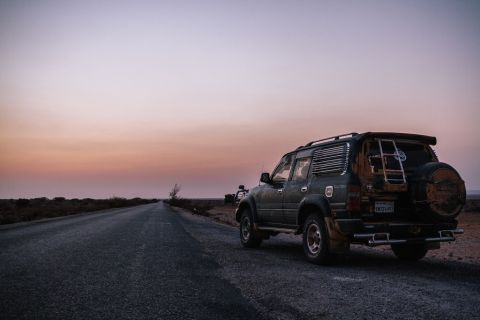
Sunset on the road back from the IDP camp in Eyl, Somalia. ©World Vision/Maxwell Moser
“You have places like this in the US?” Mohammud asks, turning around from the shotgun seat to look at me. He’s a nutritionist with World Vision Somalia, my guide and interpreter during this week-long trip to the Puntland region.
“Kind of,” I say, “there’s a place they call Death Valley.” He laughs, repeats what I said to the driver in Somali and they both chuckle.
Before we ventured onto this expanse of dirt road, we spent many kilometres on a stretch of tarmac. There, I’d catch my first glimpse of starvation: the bodies of dead animals, mostly goats, in various states of decomposition, strewn along the road every few hundred yards. At first, I thought it was just roadkill, a few unfortunate goats straying from the herd. But there were too many for that to be the case, and Mohammud explained that herdsmen transporting their animals in search of grazing land will toss the ones that get sick along the way. Drought doesn’t only kill through dehydration and exhaustion; it erodes the immune system as well.
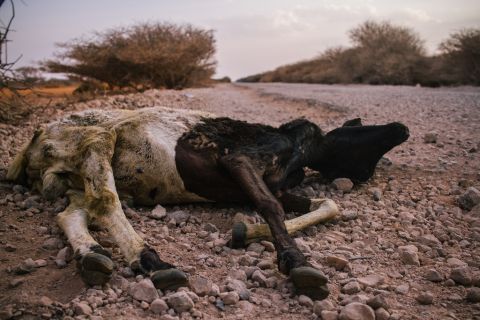
A dead goat carcass lies on the side of the road. ©World Vision/Maxwell Moser
After a few hours on the road, we arrive at our destination: a camp for Internally Displaced Persons (IDPs) - a cluster of huts made of sticks and bits of tarp and garbage, a makeshift community for Somali families forced from homes by the drought.
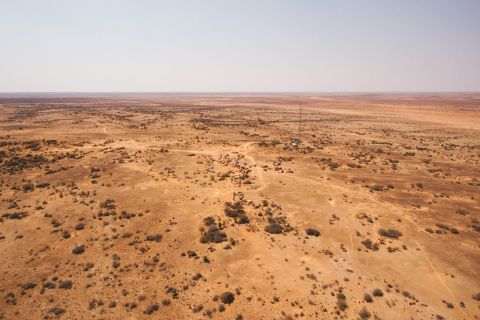
IDP camp in Eyl, Somalia. ©World Vision/Maxwell Moser
Half of the population in Somalia—over 6 million people—are in need of immediate humanitarian assistance. Three years without rain has dried up the land, killing crops and leaving no food for the people or their herds. Their stomachs are empty as are their pastures.
Mohammud translates, as the families tell us their plight. Most were once pastoralists and have now lost the majority, if not all of their animals. From a herd of 500 goats, now down to 50. And from 30 camels, to none at all. Mohammud tells me that a camel can be worth between $600 and $1000. These aren’t small losses. These are the families’ only assets: their means of transportation, hauling, trade and family pride, destroyed all at once, but with no insurance policy to replace them, and no family or neighbors to help. Everyone you know has lost everything they own.
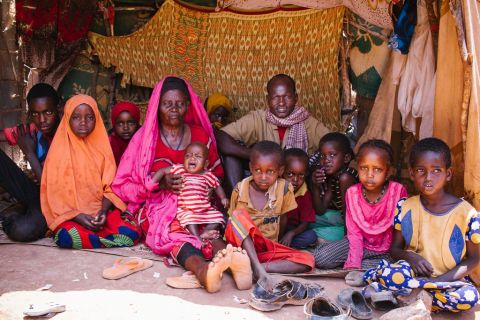
A family who lost two children due to malnutrition in March. ©World Vision/Maxwell Moser
A young boy of seven or eight tells me that his family moved from their pasture to the camp because their goats started dying but that when he arrived at the camp he still had two goats. Just a few days before I arrived, he wandered to the road to look for something else and there were his goats, both lying in the dirt, dead from the heat and lack of food.
It dawns on me that this is how starvation works: slowly stripping away until nothing is left.
A few days later, in a different IDP camp, a woman will recount her story and lament, saying, “Our situation needs action, it doesn't need talking...we are afraid that we will die before we get assistance.”
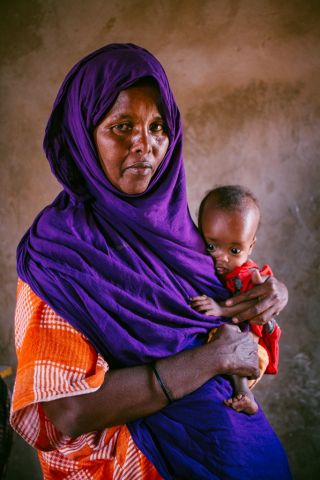
A woman and her child in World Vision-built housing in Puntland, Somalia. ©World Vision/Maxwell Moser
I’ll often end interviews by asking a final question: “do you think it’s possible for the world to be hungerfree?” The answers are often interesting, but on this trip, I can’t bring myself to even ask. In a place at risk of famine, the concept of a hungerfree world seems incredibly absurd to me, so I phrase things a different way: what do you hope and pray for in the future? The responses are somewhat varied, but a common theme resounds: “we pray for rain.”
In a modern world where we produce more than enough food for the planet’s 7.5 billion people, nearly 800 million go hungry every day. Hunger isn’t just about empty stomachs—hunger starves economies and livelihoods. It starves everything it touches.
Today, more than 25 million people are in need of immediate life-saving assistance in East Africa. World Vision is on the ground in Somalia and neighbouring countries in East Africa, working to provide food and restore livelihoods. A hungerfree world is possible, but only if we all work together. Find opportunities to contribute here.